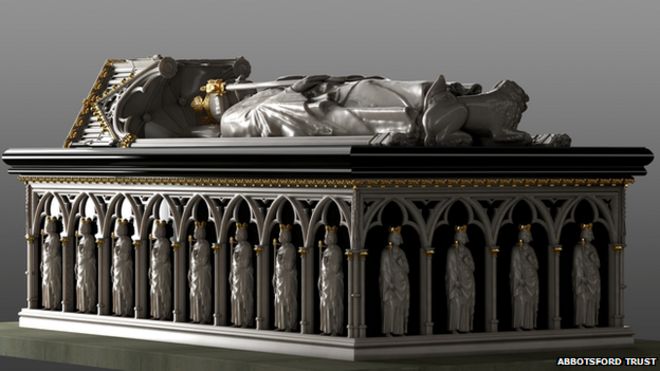On the 23rd April many countries around the world will be celebrating World Book Day (something that the UK has done in recent years a month earlier). This date was originally chosen to coincide with the date of William Shakespeare's death, probably the most famous wordsmith in history. In honour of Sir Walter's lifelong admiration for the Bard, I thought bookish banter should be the order of the day!
Over the past week or so we have been beavering away, armed with our trusty gloves, archival tape and camera, condition-assessing the books on display in our free to access exhibition in the Abbotsford Visitor Centre. Walter Scott's library at Abbotsford is a rare thing indeed, and not just because Sir Walter thought it the 'handsomest room in Scotland'! Most personal libraries of writers, statesmen and academics end up dispersed or at the very least, depleted after the death of the original owner as items are discarded or claimed by various living relations. Particularly significant collections may be absorbed in their entirety into larger museum or institutional collections. The fact that Scott's library remains wholly intact and that the volumes sit on their shelves in the very position they occupied during the author's life, is remarkable, and one of the many reasons that we now treat the collection as a conservation library. Direct access to the books, even for researchers, is something strictly governed to ensure their long-term survival. For this reason, one of the most rewarding parts of my work is selecting a handful of these books for public display, offering visitors a rare glimpse inside the front covers. In the last changeover alone we added an edition of Tam o' Shanter annotated in Robert Burns' own hand, a manuscript revealing Scott's first attempts at copying Icelandic sagas and one of the world's first historical novels, Guerras civiles de Granada.
Now, it would of course be a travesty for the literary property of a lifelong bookworm such as Scott not to form a significant part of the exhibition on his life and work. However, from the standpoint of a Heritage team, paper is one of our more high-maintenance friends! Every January we have a complete changeover of all the books displayed in the Visitor Centre and then every three months, all those books have to be assessed to see how they are coping with display, with very few books permitted to remain on display for more than six months at a time. On the face of it, this may seem nonsensical. How could a book visibly change in a matter of months whilst locked away in a case?! You'd be surprised.
 |
| Scott's personal bindings displaying his portcullis symbol and motto: Clausus Tutus Ero (roughly translates to 'Closed in I am safe), quite appropriate for the contents of a conservation library! |
When shelved, the books at Abbotsford are kept in an stable, environmentally controlled setting, packed fairly tightly with a gap at the back to ensure adequate air flow. Some of the books owned by Scott are contemporary with his life and writings but others were antiquarian treasures even by his standards. For books, the display process is all about finding the right angle for pitch and opening that puts the least strain on the binding. Sometimes, fascinating books we would love to display simply don't make the cut because they're too fragile. Others need to be carefully monitored to ensure they don't start to warp or gape when you attempt to close them and this is what we've been checking and photographing over the last few days for those books currently on open display. Pages also need to be turned to try and mitigate the damaging effects of UV light. For those books that are already showing any signs of structural deterioration at this three months check, it is the end of the road for their display and replacements on a similar theme must be sought. And thus the cycle continues.... but we wouldn't have it any other way!
 |
| The visual warning signs that a volume is not suited to prolonged display - Scott's copy of Halidon Hill. |
The moral of the story is this: if you are a particular fan of an exhibition or museum that displays rare books, make sure you return every few months because you're always likely to see something new. For Abbotsford this time will come in the summer, so why not come and see our latest discoveries for yourself?
Thanks for reading!
Kirsty Archer-Thompson
Heritage and Engagement Manager




